Best Corded Top Handle Jig Saw – Head to Head Comparison
Top Handle Jig Saw Head To Head
First off we’d like to thank Lenox tools for contributing all the blades to this test to keep the playing field as level as possible.
Jigsaws have been around for a while, they were invented in 1946 by an engineer in Switzerland who replaced the needle is his wife’s sewing machine with a saw blade (nice!). The Bosch tool company eventually acquired the company he started and the rest as they say is history.
Bosch may have been the first major toolmaker to produce jigsaws but these days they’ve got some stiff competition.
Top Handled, Corded Jig Saw Comparison Testing
Head To Head Testing: We took an extensive look at the major top handled, jig saw models on the market to see how they compared. With hours of cutting and critical analysis of each saw’s features and performance we are providing readers with a comprehensive look at each saw’s bright-spots and areas for improvement. Please note that all saws feature a 1″ stroke length.
We tested the following jigsaws:
- Bosch JS572EL
- 7.2 Amp
- 800-2,800 SPM
- 5.15 lb
- DEWALT DW331K
- 6.5 Amp
- 500-3,100 SPM
- 6.4 lbs
- Festool Carvex PSB 420
- 4.5 Amp brushless motor
- 500-3,800 SPM
- 4.2 lbs
- Makita 4350FCT
- 6.3 Amp
- 800-2,800 SPM
- 5.7 lbs
- Milwaukee 6268-21
- 6.5 Amp
- 0-3,000 SPM
- 6.4 lbs
Jig saws are more of a finesse tool, we wanted to see how these tools handle in making curved cuts in birch ply to test for chip-out and blade tracking, straight cuts in laminate countertop to test cut quality and finally we did a more demanding test to really test speed and power and to put blade tracking and deflection to the test by doing short rips in 2x, #2 pine.
We looked at the following factors in our testing:
- Ease of Use
- Power and speed
- Cut Quality
- Blade tracking
- Price Point
- Ergonomics
- Overall Winner
Jig Saw Head to Head Video Summary
So how did the pendulum swing? Read on and find out!
Ease of use: Blade changes, adjustments and cord length.
Winner: Bosch JS572EL
We looked at blade changes, bevel adjustments, and cord length to determine our ease of use category winner. These are all the features that make it easier to get the job done when making those critical cuts with a jigsaw.
A good blade change includes an easy to actuate blade release that helpfully springs the blade free to prevent burns when removing smoking hot blades from the tool. But it also has to have a firm grip on the blade to prevent accidental release.
Bevel adjustments are one of the most common adjustments made on a jigsaw. Being able to set a slight back bevel for a tight scribe quickly and easily is a key factor in any jigsaw.
Cord length may seem like a minor feature, but one that can really make or break the utility of a tool. The team talked about it and reason that the 13 foot cord is the way to go because it allows you to work on 8 ft. stock on a bench that’s setup with power without needing an extension cord.
Bosch JS572EL
The Bosch JS572EL jigsaw had easy to set adjustments for speed, bevel, orbital action, dust blower and LED light switch. The Bosch JS572EL is a very straightforward tool to use. The bevel adjustment is tool-less with detents at 0, 22.5, and 45 degrees.
The 13’ long cord has a swivel connector at the rear of the tool. This is a nice touch that allows the user to get into tighter spaces like cutting counter tops in place. The longer cord will allow set up at an onsite work bench without needing to get out an extension cord just to make a long cut.
DEWALT W331K
The DEWALT is easy to use with tool-less blade changes with a large paddle, bevel settings and the most detents in the test at 0, 15, 30, and 45 degrees.
DEWALT did come up shortest on cord length at 7-1/2 feet.
We found the dial on the trigger for blade speed adjustments awkward and not as easy to use as electronically controlled dials found on the Bosch, Festool and Makita.
Festool Carvex PSB 420
The one negative issue with the Festool is that the stock baseplate has no bevel adjustment; so you need to buy the $105 angle base or the $200 accessory kit to do any angle cuts with this saw. This is where things get weird. The adjustable baseplate is a butterfly affair where both halves of the base plate articulate with a dial. The angle base does some things that a normal jigsaw can’t do, however it hinders some basic cutting operations as well.
The Carvex has a removable 13’ long cord that is compatible with other corded Festool tools. This makes for easy replacement in case of damage.
Makita 4350FCT
The blade release is quick, but it involves some plastic parts that may be prone to breakage, time will tell on this one. Bevel adjustment has no detents. Makita is also the only saw without tool-less bevel adjustments, which is disappointing. However the Allen key is the most secure we’ve seen. Makita tucked the Allen key unobtrusively into the baseplate of the saw.
At eight feet, the Makita has the second shortest cord in the test.
Milwaukee 6268-21
Blade changes are quick release and very secure on the Milwaukee. The bevel adjustment lever is large and tucked unobtrusively under the barrel of the saw. There are bevel stops at 0 and 45 degrees.
The cord is a generous 12’ 6” cord placing is just 6 inches behind the Bosch and Festool.
The only down side is the trigger dial for speed adjustment similar to DEWALT.
With these features the Milwaukee is a solid contender for ease of use and adjustments.
Jig Saw Power and Cut Speed
Winner: Tie Bosch and DEWALT
Bosch
With a 7.2 Amp motor the Bosch has excellent cut power and speed. But even with that power it has a nice smooth feel comfortable feel even at max speed with little in the way of vibration. The Bosch tied with DEWALT in our speed test making fast work of a cutting through 2x, #2 pine. And it also sailed through the birch and laminate during testing. But this is no surprise with its powerful motor and 2,800 spm no load speed
DEWALT
The DEWALT only sports a 6.5 Amp motor but had a more powerful feel than the Bosch and with a higher 3,100 spm no load speed the DEWALT sailed quickly through our speed test, ripping through the 2x with ease.
Makita
The Makita’s 6.3 Amp motor puts it right in the middle of the pack for power and speed. Slightly behind the Bosch and DEWALT but still coming in above the Milwaukee and Festool.
Milwaukee
Despite its 6.5 Amp motor the Milwaukee scored a bit lower than the Makita putting it in fourth place for speed and power.
Festool
The Festool has a brushless motor that delivers longer motor life and higher efficiency, but at only 400 watts or approximately 3.5 amps the brushless technology doesn’t make up for the lower amperage. The smaller motor delivers a lighter, easier to use tool that’s great for fine detailed cuts but the lower power makes the Festool a little under powered relative to other saws in the test.
Cut Quality in Laminate
Winner: Tie Bosch and Festool
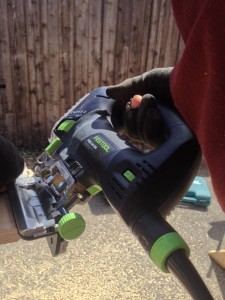 Bosch
Bosch
The Bosch delivered an excellent, smooth cut in laminate with minimal chip out. The Bosch really excels given that it has the most powerful motor in the group and also produces an excellent, clean cut.
Festool
The Festool is very light and easy to maneuver making it almost effortless to use. Cuts in laminate were very clean with almost no chip out. With Festool the lower powered motor doesn’t hold it back but the tight manufacturing tolerances and excellent engineering really make this tool shine.
DEWALT
The DEWALT came in second with a decent showing but more chip out than our winners.
Makita
A little surprise here the Makita came in third in our laminate test.
Milwaukee
Milwaukee came in fourth with more chip out than the other tools in the test.
Blade Tracking and deflection
Winner: Bosch
We made s-curve cuts in birch plywood to test blade tracking and cut quality in a difficult material that is prone to chip-out even in straight cuts. We looked at chip-out and how plumb the cut stayed during curved cutting. This gave us a good idea of how well the blade guide mechanism on the saw works for critical cuts. We were really splitting hairs on this test, the performance was very close between the five saws.
Bosch
The Bosch’s blade tracking worked beautifully in this test making for a nearly square cut with very little blade deflection. And it was easy to keep the tool on the line during curved cuts.
DEWALT
DEWALThad solid blade tracking and little by way of deflection.
Festool
The Festool had a nice square cut as well. Oddly the “Automatic” speed control on the Festool actually hindered performance for some users in this test. My theory here is that the torque on the blade would actuate the auto blade speed and cause the blade to speed up at inopportune times. The best solution to this is probably to just leave the tool on high speed and cut away.
Makita
Makita fared well in this test.
Milwaukee
The Milwaukee did very well in this test.
Ergonomics
Winner: Tie Bosch and Festool
How much you like a tool depends heavily on how it feels in your hands. A tool with good ergonomics can make some arduous tasks much less difficult in the long run. Obviously this is a subjective category but Bosch and Festool stood out for a couple of unique aspects.
Bosch
Rubber over-mold and a smooth variable speed trigger with good modulation and a very smooth feel make the Bosch a very comfortable tool to use. The lock-on button is placed forward of the trigger and grip area meaning it’s not as easily bumped on or off during use. The lock-on is also ambidextrous which is great for use in tight spaces and for lefties.
Festool
No rubber over-mold but a thin, easy to grasp handle and light tool weight along with easy to make adjustments and blade changes make the Festool a nice comfortable tool to use. The auxiliary on/off switches on the side of the tool are just like the ones on their barrel grip saw and allow the user to switch the tool on, leave it on, and cut away. The switches are placed such that they can be easily reached whether cutting left or right handed.
DEWALT
A variable speed trigger and a decent helping of rubber over-mold make the DEWALT a good option based on ergonomics. But a rougher approach to adjustments make this tool feel a little less refined than other models.
Makita
Despite its claimed weight being lower than others in the test the Makita felt heavier than others in the test and something about the angle of the handle made it a bit uncomfortable on the wrists for some users.
Milwaukee
The Milwaukee has one of the most hand friendly bevel levers in the test, and a variable speed trigger and rubber over mold for a decent showing in this category.
Visibility, Blower and LED lighting
Winner: Bosch
With visibility we did a subjective test and we judged which saw seemed to provide the best visibility. But we also set a camera up with identical exposure settings to see which saw produced the most light.
Bosch
The Bosch features a blower with on/off switch and two bright LED lights with a rubberized push button switch on the top of the tool. The LEDs are really nice and bright here making for great visibility even in more difficult lighting situations.
DEWALT
An adjustable blower but no lights keep the DEWALT from standing out in this category.
Festool
The festool doesn’t have a blower but features an integrated clear dust shroud and excellent dust collection. The Festool also features what they call stroboscopic lighting. The Carvex has 4 bright LED lights that turn on and off in time with the blade stroke making the blade appear as though it is standing still in the cut, giving excellent scribe line to blade kerf visibility.
Makita
The Makita features a blower with on/off switch and one LED. The LED light on the Makita appears to be somewhat dimmer than seen on the other saws in the test but still bright enough to get the job done.
Milwaukee
The blower on the Milwaukee is adjustable making it possible to clear your cut line without blowing dust into your face. The LED light gives good visibility to the cut line.
Dust Extraction
Winner: Festool
There’s a lot of focus these days on dust extraction and with good reason. Less dust in the air is less dust to clean up at the end of the day, and less dust around to bother your clients. But most importantly it means less dust in your lungs, which keeps you healthier in the long run.
Festool
The Festool comes stock with the dust collection accessory and with an integrated slide down clear dust shroud that covers most of the front of the tool the Festool has the easiest to use and very effective dust collection.
Bosch
The dust collection on the Bosch requires an optional accessory. The big plus here for Bosch is that the dust collection attachment has a pivot in it allowing the attached hose to swivel 180 degrees another feature that makes it easier to get the Bosch into tight spots.
Makita
The Makita also has an optional dust collection accessory although at time of publishing we were unable to acquire it.
DEWALT and Milwaukee
Neither of these saws feature dust collection.
Accessories
Winner: Festool
Accessories can make or break a tool. If there’s a particular accessory that you’re going to use a lot then this can be a big factor in which saw you purchase. We looked at the number of accessories, how well designed they were, how well they integrate with the saw and when applicable how well they work with other tools.
Festool
With a wide range of unique accessories Festool takes the top prize here. With integration into the Festool track system the guide base works with Festool guide tracks. Dust extraction is excellent and Festool dust extractors are well known for their performance, ease of use and quiet operation. The circle cutting guide for the Festool is truly unique and allows for up to circle cuts almost 10 feet (yes feet) in diameter! The angle base is also a unique accessory. But one of the best uses I found for it is coping mouldings. It allows you to set a back bevel on your coped joints accurately and without needing a dedicated coping foot or having one half of your jigsaw’s foot getting in your way.
Bosch
Bosch features a wide range of accessories, including dust extraction, a guide for parallel and circle cutting, and anti splinter inserts.
DEWALT
Does not appear to offer accessories beyond blades.
Makita
A great saw but limited accessories. Makita does offer a dust collection accessory but it may not be easy to find. Their jigsaw is also compatible with their rip guide but there isn’t a circle guide offered.
Milwaukee
While a solid saw there are no accessories of note available for the Milwaukee saw.
Street Price Point
Winner: DEWALT
We looked at price point and made a judgement call on features and performance to come up with what we think is the best bang for your buck in the test.
DEWALT $150
The DEWALT is a solid performer, coming second overall, but lacks some features like LED lighting, and dust collection accessories, but it’s definitely a winner on price point.
Bosch $290
Premium saws come at a premium price. The Bosch has a lot of features, a good range of accessories and great performance. These things come at a cost though. And the price tag of the latest high end offering from Bosch shows it.
Festool $350
If Bosch is a european luxury car then Festool is a high end sports car. With some un-matched features like automatic blade speed setting and stroboscopic LED lighting and (optional) task specific base plates and an amazing (optional) circle cutting attachment the Festool has excellent refinement and fantastic range accessories that will allow you to do things you can’t do with other saws in the test, like large diameter circle cutting and inside corner bevel cuts, but these unique features come at a high price.
Makita $180
A solid saw with some nice features for a decent price. You can’t go wrong with Makita.
Milwaukee $180
A 5 year warranty and good performance.
Overall Best Top Handle Jig Saw
Winner: Bosch
Jigsaws are all about refinement. Getting more power is nice but as a tool typically used for making curved and scribed cuts you want a tool that makes it easy to follow that scribe line and get a clean cut.
Easy to adjust tools that provide good line of sight and have solid features will win the day here. True to form in jigsaws Bosch put it all together with a wide array of useful features, best in class power and performance and excellent handling and ergonomics.
Bosch
Being the first to bring the Jigsaw to market it’s no surprise that Bosch performed so well. With well thought out features, dual LED lights, well engineered accessories, a swivel cord, excellent blade tracking, and solid performance that is both fast and accurate it’s hard to beat this tool.
DEWALT
The DEWALT gave a good showing coming up second in testing with some well thought out features and a strong motor, but lacks some of the refinement of the Bosch or Festool, and features, like LED lighting, and dust collection. But it’s a great saw for the money. If you’re looking for a well performing saw and don’t want to break the bank DEWALT is a good way to go.
Festool
The Festool is small and light making it easy to use but we found it a little lacking in power. The lack of an adjustable base in the stock kit means a heavy cash outlay for the accessory kit to get basic jigsaw functionality. However, once you have the accessory kit the Festool allows you to do things you simply can’t do with other jigsaws. And of course the German engineering and manufacture make for top notch fit and finish. If you want the best of the best and some really unique accessories go Festool.
Makita
The Makita has a lot of nice features but isn’t a standout in any category. The generous rubber over mold makes for a nice grip but the angle of the handle felt off to some users. The Allen key bevel adjustment makes this tool a little more difficult to adjust than the competition. But at only $30 dollars more than the DEWALT it’s still a great option and a solid saw. If you don’t make a lot of baseplate adjustments and want LED lighting the Makita is a good option.
Milwaukee
The Milwaukee is still a decent saw but just doesn’t shine enough in any area to make it outstanding. However with a 5 year warranty, solid premium jigsaw performance and features LED lighting, blower, constant blade speed circuitry, and at $100 less than our top pick, you can’t go wrong with this tool.
About the author
11 Comments
Leave a comment
Disclosure
Product reviews on this site contain our opinion of a product or service. We will always strive for objectivity and transparency in our reviews. Our goal is to provide readers with honest, objective information based on our own experiences. We never have and never will accept payment in exchange for a positive review. Many of the products that we review are provided to us for free by a manufacturer or retailer. In some cases, we also have advertising or affiliate relationships with manufacturers and retailers of products and services we review. For additional information please visit our additional disclosure policies.












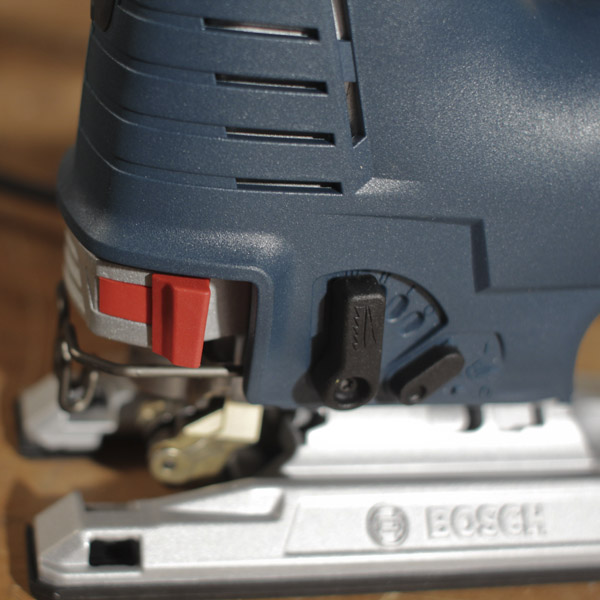
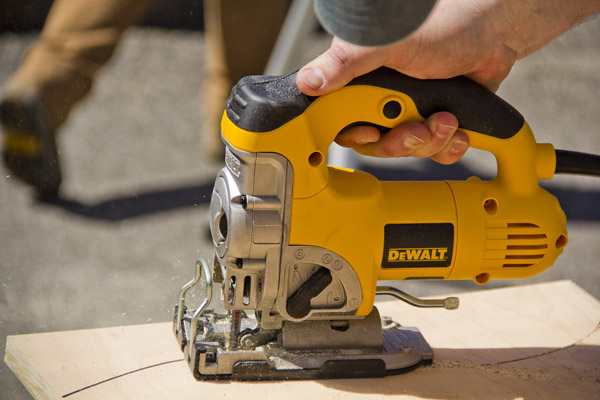
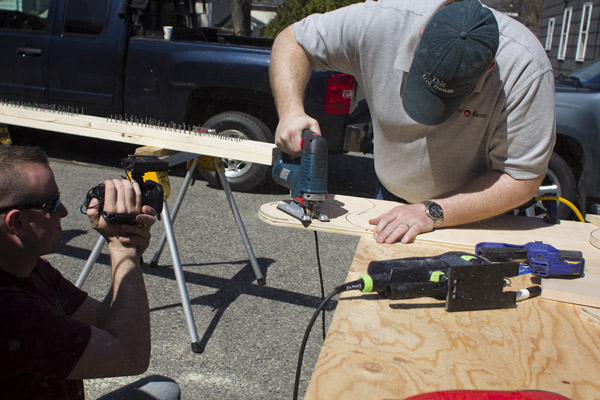
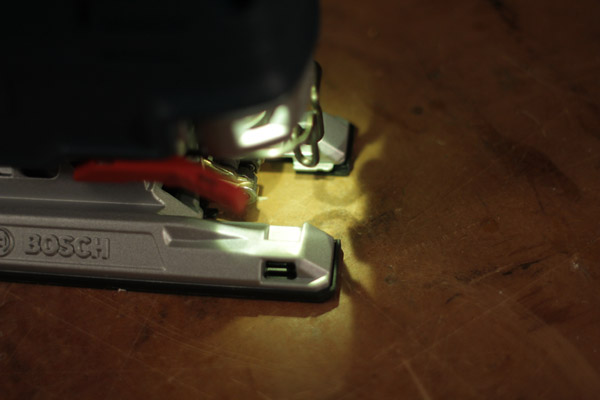
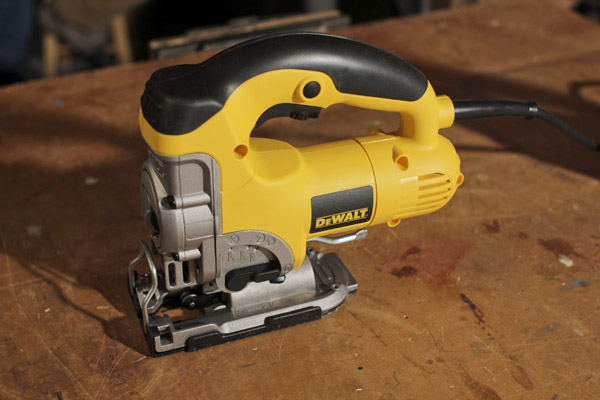
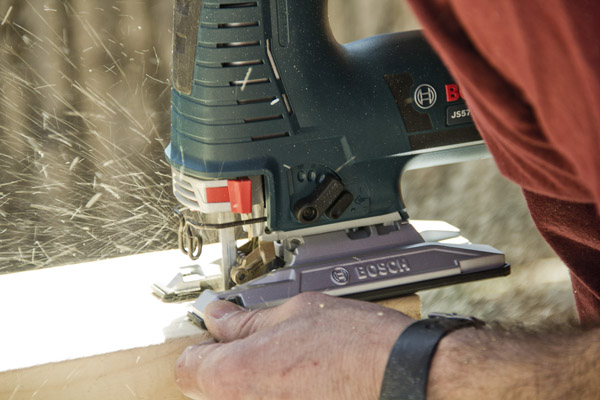
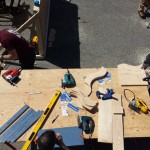
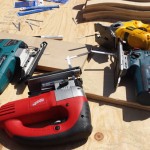
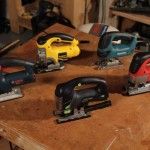
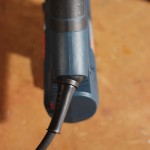

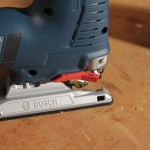
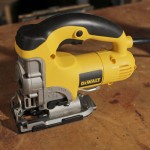
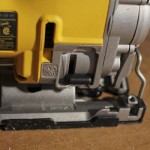
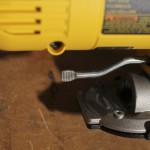
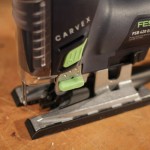
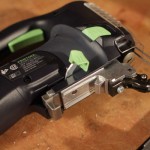
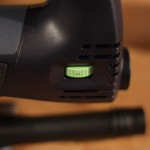
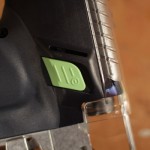
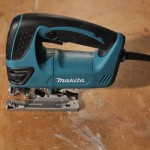
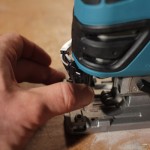
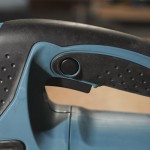
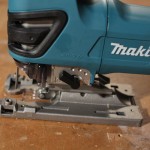
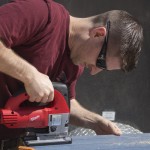
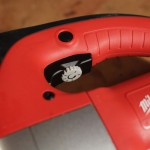
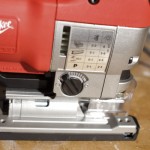
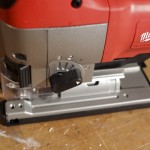












Wow A+. Very helpful.
Great review, thank you!
I hate my carvex!
So helpful, thanks.
Great break down of these brands and models. I will say that the Bosch right now is being made in Hungry and is now cheaper made and problems have resulted. You might want to put some sort of disclaimer on this older review. It has been four years since you posted this and do you have any suggestions for best electric jigsaw for 2018-2019? Thanks
Helpful but I wish the Dewalt tested was closer in price and amps to the others to make it more fair. Would have been better to have done a comparison where all Jig Saws were around 6.5A and $150. The Bosch is 2x the price of the Dewalt.
A lot of group test reviews are superficial so it was great to come across yours. I know some of the models you tested still exist, but,
and I read Trillium’s comment on the Bosch, perhaps it’s time, it’s now in the autumn of 2020, for an update? Pretty please 🙂
HI Marc,
We’re considering a cordless Jigsaw Head 2 Head but the market is rapidly moving away from corded tools. Heck, I have a full kit of corded tools that I haven’t touched in a couple years! But we’ll keep your comment in mind when we plan our next few Head 2 Head tests.
We tested the best jigsaws from the companies featured. Bosch does make a less expensive tool but Dewalt doesn’t make one that hits as high a price point as the Bosch or Festool. It is nigh impossible to make a test that is truly “fair” as there are always differences in amperage, features, etc… Many times when we write a review we get a tool that was just released by one company and one that is a few years old from another.
Hi Ethan
A cordless head to head would be great!
I’m glad to see a corded top handle jig saw head to head comparison. I’m looking for a good one to buy.